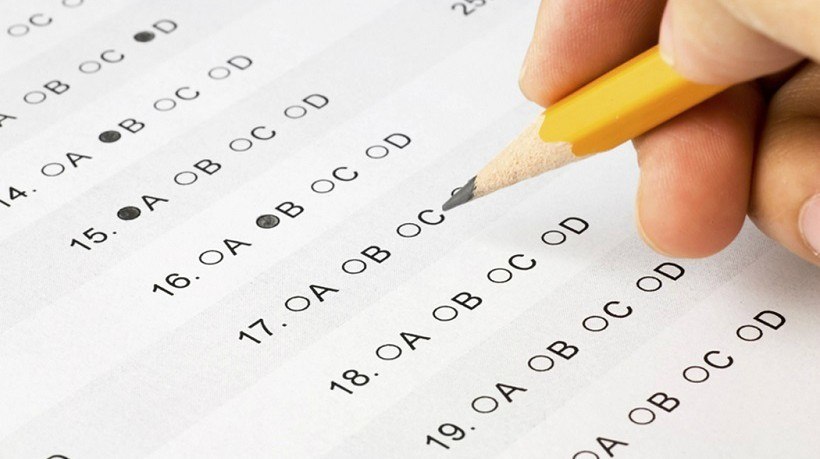Understanding Discrete And Continuous Data
When we talk about quantitative data, we can split it into two groups: discrete data, which represents things we can count, and continuous data, which covers a range of values. Continuous data is all about taking measurements and looking at the different forms they can take. The differences between discrete and continuous data and how to use them might be a bit challenging to grasp at first. However, data-driven insights can highly influence decisions and help you achieve business success. Professionals who are familiar with these particular data types can spot situations where the data may be particularly useful. For instance, this information can be used by marketers to enhance their plans and advertising campaigns. So, let's break down the concepts of discrete and continuous data and discover their main differences.
What Is Discrete Data?
So, what exactly is discrete data? In simple terms, it's like counting the books on your bookshelf. You can't count half a book. Likewise, discrete data is counted in individual units that are distinct and separate from each other. You'll only encounter whole numbers without fractions or decimals; thus, discrete data has a limited number of values. For example, in your business, you'll come across discrete data such as the number of customers in your store, the clicks on your website, or your likes, followers, and opportunities to make money with Instagram on social media.
What Is Continuous Data?
Unlike the above data type, which has separate values, continuous data is exactly what its name suggests: smooth and flowy. Continuous data represents values that aren't fixed and can take on an unlimited number. This means that there's an infinite spectrum between each value, too. Continuous data is extremely detailed, as you can measure it to any decimal place. It's like measuring weight. The scale can show 15kg, but it can also show 15.02kg, 15.632kg, and so forth. This makes this type of data ideal for measurements where precision is required.
Differences Between The Data Types
Data Points
We discussed how discrete data is countable, like the number of people in a room. We also mentioned that continuous data is the exact opposite and can take any value within a range. Knowing their difference in data points holds importance, as it affects how we collect, analyze, and interpret data. So, when you want to know exact numbers and frequencies, like how many times a number appears, you will deal with discrete data. On the other hand, if you want to know averages, you'll go for continuous data and use statistical methods for analysis. Different data points can also be combined, though. For instance, if you work in healthcare, you may want to count the patients in urgent care and their temperature. In that case, you'll use both discrete and continuous data.
Measurement Scales
When your dataset consists of numbers, you need to know how to measure it. But first, you should know which of the above data types you're dealing with. If you're dealing with discrete data, you will use nominal scales where you'll categorize it by its name, like "people," "cars," and "dogs." You can also use an ordinal scale, categorizing it in order, let's say, from 1 to 5. Continuous data, though, includes decimals, and they need different measurement scales. You can use an interval scale where every number has the same difference, like a ruler. However, a ratio scale might be more accurate since it can compare the differences between numbers. It's like a ruler showing you that 4 is twice the number 2.
Visualization
Data visualization helps you make sense of it all by seeing it in a way you can interpret better, like graphs. But different data types have different visualization techniques. Discrete data can be pictured in bar charts, where each category has its own bar; histograms, which work better when categorizing groups; and pie charts, which show each category's proportion relative to the whole group it belongs to. For example, a pie chart can indicate how many female patients are aged 18–24, 25–32, etc. Continuous data use techniques like line graphs, representing data in a continuous line connected with dots, and density plots, showing highs and lows in values.
Statistical Analysis Methods
Discrete and continuous data are analyzed differently in statistics, too. You can use similar methods but with a twist. Descriptive analytics, for a start, calculates and summarizes the values for discrete data while describing averages for continuous data. So, when talking about customers in a store, you'll say, "There were 3 women and 5 men. The average time they spent in the store was 15.3 minutes." As far as probability distributions are concerned, discrete data is analyzed in a finite list, but continuous data is represented more like a curve. There are also more statistical analysis methods, such as hypothesis testing and sampling techniques.
Applications Of Discrete Data
- Manufacturing
Here, discrete data plays the first fiddle. Workers in the manufacturing industry need to count items, do quality checks where they decide which products pass or fail, and measure defect rates.
- eCommerce
In order to efficiently manage inventory and other e-shop operations, online retailers use discrete data for the number of orders, products in stock, and even ratings.
- Education
Teachers and other education professionals need to track student performance on a regular basis, often with the help of a Learning Management System integrated with online course platforms to maximize efficiency and effectiveness Tech tools use discrete data to keep attendance, exam scores, and insights like the number of students in classes, how many activities they participate in, etc.
- Healthcare
Healthcare workers keep patient records and other sensitive information in order to plan treatments, research, and care for patients more efficiently. Data like the number of surgical procedures, visits, or medications, among others, are all discrete.
Applications Of Continuous Data
- Meteorology
Temperatures, humidity levels, and other metrics concerning the weather are all continuous data. Thanks to this, meteorologists can give us accurate weather forecasts and predict future changes in climate.
- Finance
People working in finance have to deal with lots of continuous data daily, like the exchange rates of different currencies, stock prices, loans, and bank accounts.
- Environment
Environmentalists need to measure air and water pollution levels, the rates at which the Antarctic ice is melting, the carbon dioxide in the atmosphere, and other metrics. This data helps them calculate the damage to our planet and get more proactive about protecting it.
- Physics
Researchers in the physics field use continuous data like volume, mass, pressure, voltage, and other measurements to study and understand physical phenomena. By doing this, they can conduct experiments and develop new technologies.
Conclusion
No matter your area of expertise, it's crucial to identify the differences between discrete and continuous data. Although things can get a little complicated because data is often a mix of different types, the above insights can help you decide which analytical approaches and methods will work best in any given situation.









